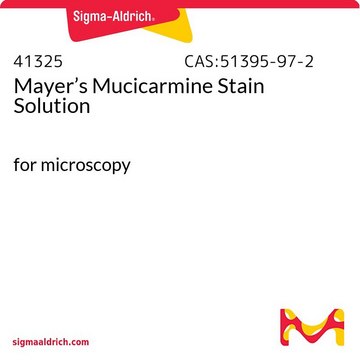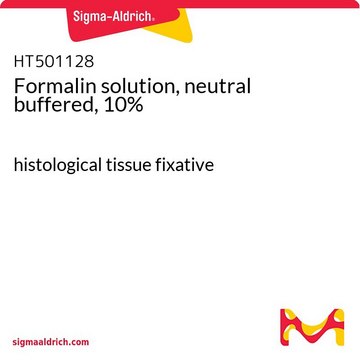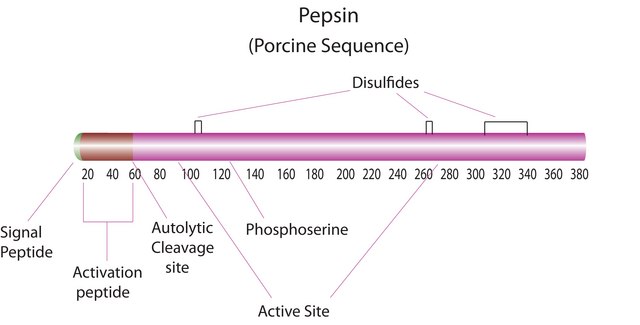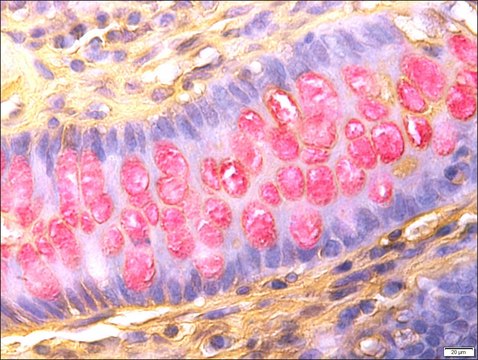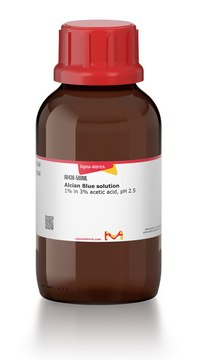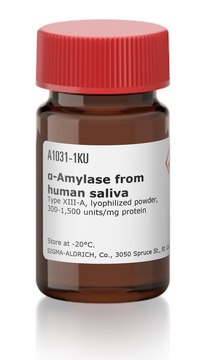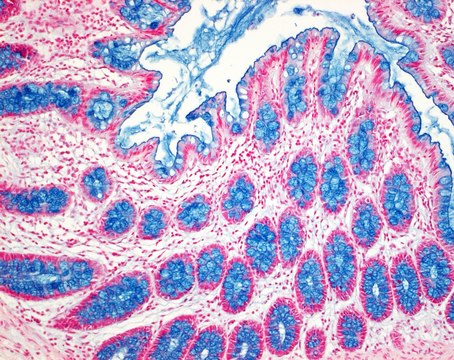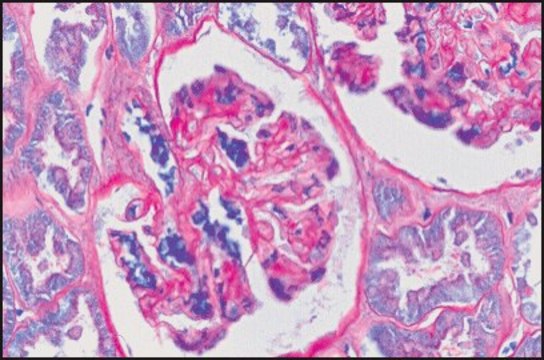Recommended Products
grade
for microscopy
Application
Mucicarmine is a histochemical that stains mucins pink. Originally used for the detection of capsular material in fungi, Cryptococcus neoformans, mucicarmine is now used to detect mucin secretions produced by a variety of epithelial and connective tissue cells, especially during certain inflammations and in certain intestinal carcinomas.
Storage Class Code
13 - Non Combustible Solids
WGK
WGK 3
Flash Point(F)
Not applicable
Flash Point(C)
Not applicable
Personal Protective Equipment
dust mask type N95 (US), Eyeshields, Gloves
Regulatory Information
新产品
Choose from one of the most recent versions:
Certificates of Analysis (COA)
Lot/Batch Number
It looks like we've run into a problem, but you can still download Certificates of Analysis from our Documents section.
If you need assistance, please contact Customer Support.
Already Own This Product?
Find documentation for the products that you have recently purchased in the Document Library.
The use of the mucicarmine stain for a rapid presumptive identification of Cryptococcus from culture.
A M VANCE
The American journal of medical technology, 27, 125-128 (1961-03-01)
The histochemical specificity of mucicarmine staining in the identification of epithelial mucosubstances.
P A Laurén et al.
Acta histochemica, 34(2), 263-272 (1969-01-01)
Emanuela F T Veras et al.
Annals of diagnostic pathology, 11(6), 407-412 (2007-11-21)
Mucoepidermoid carcinoma (MEC) comprises approximately 30% of all salivary gland malignancies, making it the most common malignant tumor of the salivary glands. Multiple histologic variants with a wide range of differentiation have been described. Sclerosing MEC (SMEC) is a rare
S A Ghamande et al.
Gynecologic oncology, 57(1), 117-120 (1995-04-01)
An 80-year-old nullipara had a 2.0-cm cystic tumor of the right labium majus. Histologic diagnosis was mucinous eccrine carcinoma. Seventy-five percent of these rare skin adnexal tumors arise on the face, eyelid, or scalp; but none has been reported on
T Yoshida et al.
Pathology international, 47(11), 775-777 (1997-12-31)
We report a rare case of adenoid basal carcinoma of the uterine cervix, unexpectedly found in a uterus resected for the treatment of cervical intraepithelial neoplasia (CIN) 3. The patient was a 47-year-old Japanese female. She received a total abdominal
Our team of scientists has experience in all areas of research including Life Science, Material Science, Chemical Synthesis, Chromatography, Analytical and many others.
Contact Technical Service